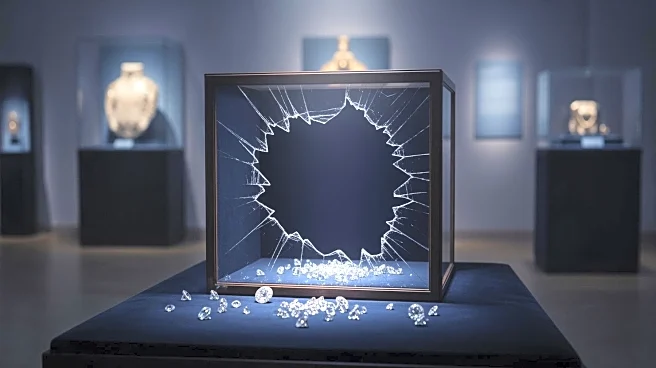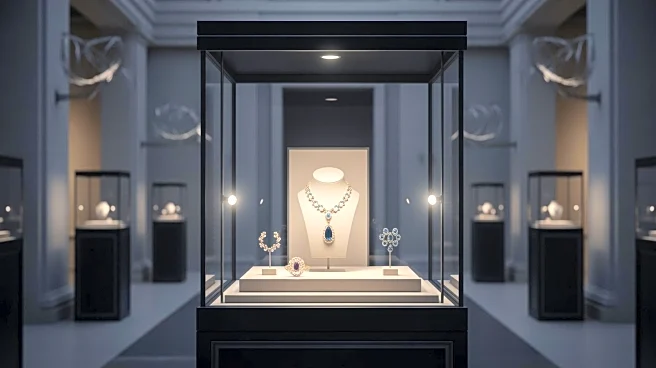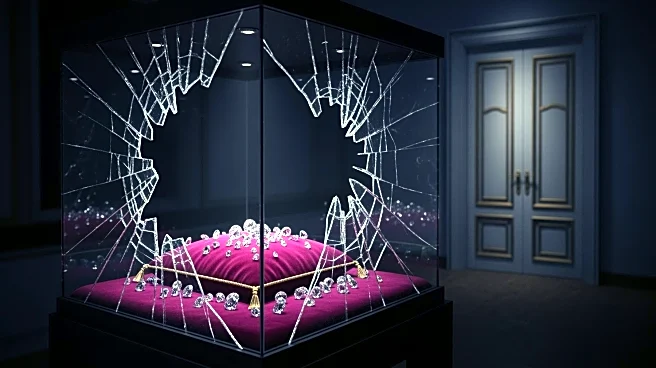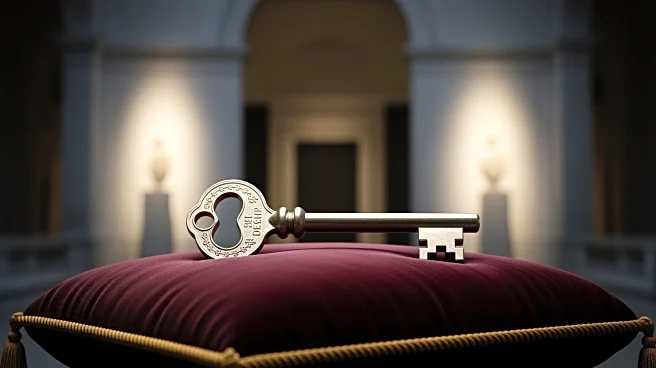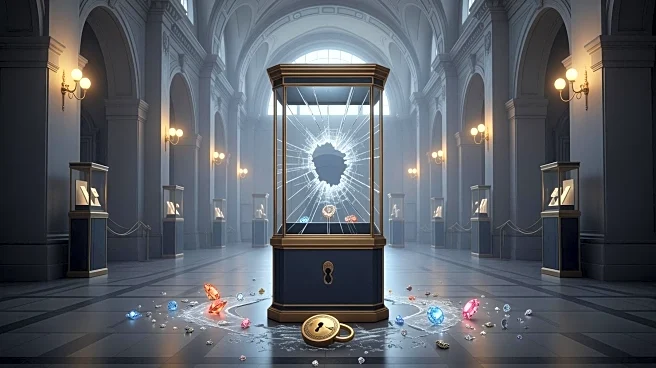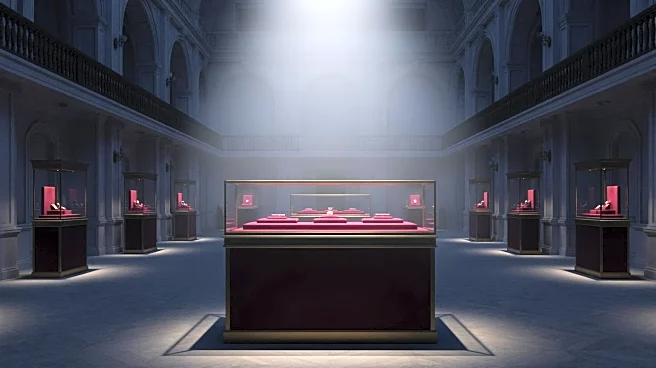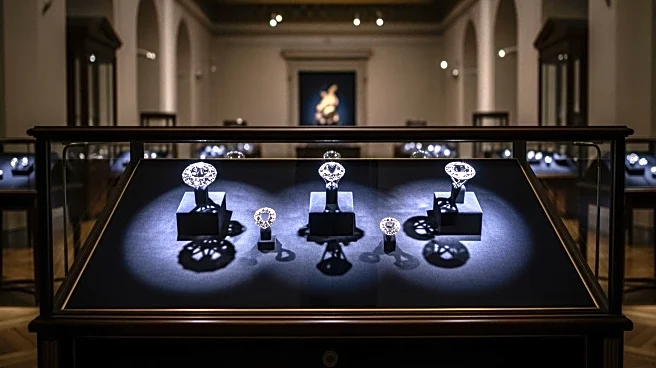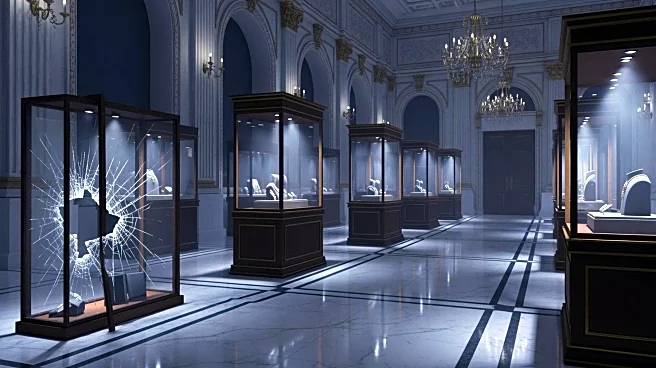What's Happening?
A group of thieves executed a daring robbery at the Louvre Museum in Paris, stealing thousands of diamonds and other precious jewels. The heist occurred in broad daylight and was completed within seven minutes. The robbers used a mechanized furniture
elevator to access the museum and fled on motorbikes. French Justice Minister Gérald Darmanin acknowledged the security failure, as the thieves managed to park a furniture hoist in the middle of Paris and execute the theft without immediate capture. The stolen items include a tiara, necklace, and earrings from the collections of Queen Marie-Amélie and Queen Hortense, as well as an emerald and diamond necklace from Empress Marie Louise.
Why It's Important?
The robbery has raised significant concerns about the security measures at one of the world's most visited museums. The theft is seen as a cultural violation, with French President Emmanuel Macron and other leaders expressing dismay over the incident. The stolen jewels, unlike artworks, can be easily disassembled and sold, making recovery challenging. This event highlights vulnerabilities in museum security and the ongoing threat of art and jewel thefts in Europe. The incident also reflects broader issues of cultural heritage protection and the challenges faced by institutions in safeguarding valuable artifacts.
What's Next?
French authorities, led by Paris prosecutors, are actively investigating the robbery. President Macron has assured that efforts are underway to recover the stolen items and bring the perpetrators to justice. The museum remains closed as security measures are reassessed. The incident may prompt a reevaluation of security protocols at cultural institutions across Europe. The ease with which the thieves executed the heist could lead to increased scrutiny and potential reforms in museum security practices.
Beyond the Headlines
The robbery underscores the ongoing risk of jewel thefts, which are often easier to execute and profit from than art thefts. The stolen jewels can be recut and sold, making them difficult to trace. This incident may lead to increased awareness and efforts to protect cultural heritage, as well as discussions on the allocation of resources for security enhancements in museums.



